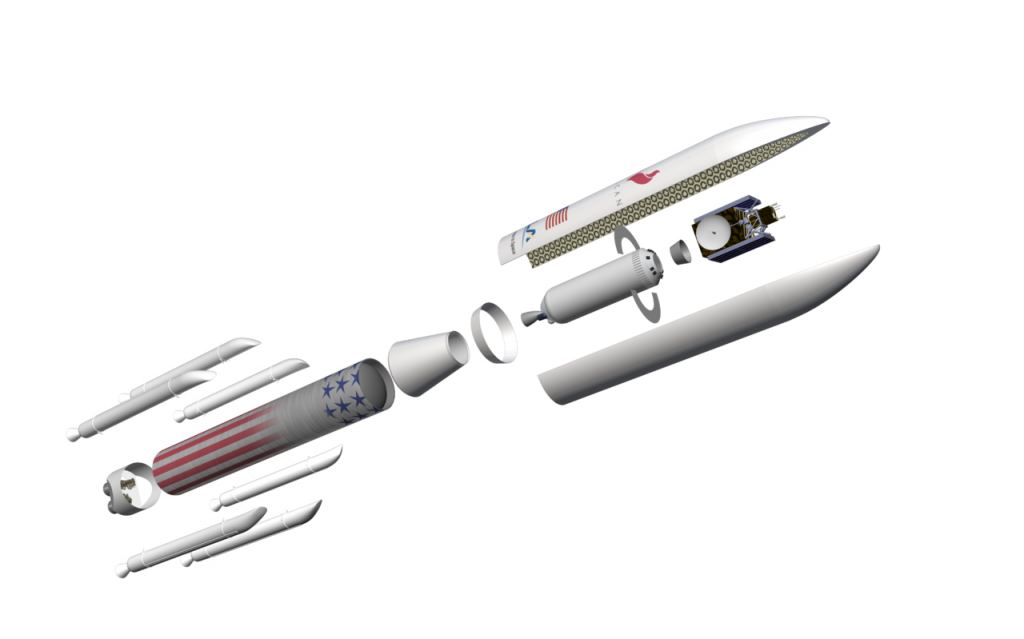Bigelow Aerospace and United Launch Alliance announced on Tuesday that they'll be sending their own inflatable habitat to lunar orbit by 2022. They're calling it the Lunar Depot. Part laboratory, part hotel, the habitat will serve as a destination for anyone planning to visit the Moon.
Suddenly the Moon has become all the rage for anyone planning trips to space. Of course, SpaceX noted that their BFR (Big Freaking Rocket) should be capable of sending the BFR spaceship to land on the Moon and return. NASA was instructed by the Trump Administration to set a course for the Moon, before heading off to Mars. The Europeans are considering a lunar village on the surface of the Moon, and the logo for the Chinese Chang'e lunar exploration program has feet on the Moon.
According to a joint press release from ULA and Bigelow, the launch would send the B330 Expandable Module atop a ULA Vulcan 562 rocket, followed by more Vulcan launches to boost the habitat from low Earth orbit to its final lunar destination.

Interior schematic view of Bigelow Aerospace B330 expandable module. Credit: Bigelow Aerospace
Bigelow Aerospace has been working on inflatable habitats for years now, sending up their own standalone Genesis 1 spacecraft in 2006. This proved that an inflatable habitat would function in space. It was supposed to last at least 5 years, but it's still going. This was followed up by Genesis 2 in 2007, which is also still continuing to orbit the Earth. The Bigelow Expandable Activity Module (BEAM) was attached to the International Space Station in April 2016, carried to space aboard a SpaceX Dragon Capsule. Since then, NASA has been testing out its functionality as a module on the station, as well as its strength, radiation protection and how it responds to temperature changes. Earlier this month, NASA announced that the BEAM module was working well, and they'd keep it on the station at least through 2020, reviewing it each year.
The Bigelow B330 is a much larger inflatable habitat. It would be 14 meters long, and 6.7 metres in diameter when fully inflated. Its launch mass will be 20,000 kg, requiring a heavy lift vehicle to carry it out into a lunar orbit. It would have an internal volume of 330 cubic meters. For comparison, the International Space Station has an internal volume of 915 cubic meters, so, about a third of ISS. Pretty impressive for a single launch. Bigelow has yet to actually construct a B330, but they have some in construction, and previously committed to having two ready for 2020.

View of the Vulcan Rocket. Credit: ULA
The Vulcan rocket is the new heavy lift vehicle in development by United Launch Alliance, the collaboration between Boeing and Lockheed Martin. Designed to compete with the newer launch companies, like SpaceX and Blue Origins, the Vulcan will have reusable rocket engines. After the Vulcan lifts off, the engines will detach and parachute back to Earth, caught by helicopters. According to ULA, the engines account for 70% of the cost of a rocket, so by catching them like this, they'll be able to reuse the engines without the additional weight of fuel, steering and landing systems.
And just like Bigelow, ULA is planning to have their first Vulcan rocket ready for test launch by 2019.
If all goes as planned, a Vulcan 562 rocket would carry the B330 into a low Earth orbit, where it would be inflated, outfitted with equipment and fully tested over the course of a year. Every few months they would send additional supplies and change out the astronaut crew.
Once everything was in working order, another Vulcan rocket would launch carrying an Advanced Cryogenic Evolved Stage (ACES) into low Earth orbit. A second Vulcan ACES would be launched to dock with the first and transfer propellant. The fully fueled ACES would dock with the outpost, and push it out to its final low lunar orbit.
In its final location at the Moon, the Lunar Depot would serve as a destination for NASA's Orion capsule which is capable of supporting astronauts in deep space. Or it could be visited by SpaceX BFR spaceships, transferring tourists for a space holiday.
The announcement of the Lunar Depot comes right at the point when the Trump Administration is directing its space exploration efforts at the Moon, so the timing is good. Of course, NASA is still working on its Deep Space Gateway, recently announcing that Russia would be contributing modules to the station.
For nearly 50 years human beings haven't left low Earth orbit, let alone go back to the Moon. Suddenly there are multiple plans to send humans back to various orbiting colonies and ground missions. We'll have to see how this all shakes out.
Source: ULA/Bigelow Press Release
No comments:
Post a Comment